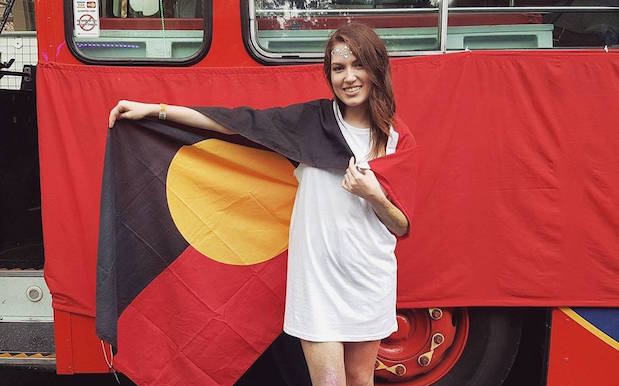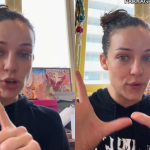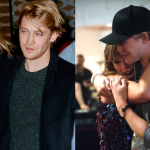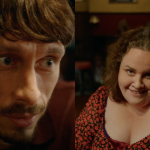
“Who are you?”
“Matika Little.”
“And what are you?”
“A strong Aboriginal woman”.
These where the words my Nan had me repeat when kids at my primary school would ask me why I have white skin if I’m Aboriginal. They’re the same words she had me repeat the day I came out to her as queer.
Growing up in regional New South Wales, finding other queer people – much less Indigenous queer people – felt almost impossible. I didn’t look like the stereotype of either community. I have pale skin, blue eyes and brown hair so I definitely didn’t look like representations of Aboriginal women I saw in the media. As for the queer community, all I had to look up to was a dancing Ellen DeGeneres on daytime TV. While I loved Ellen, I was again faced with no true representation. I was an outcast in my own community at times – those who I had hoped would be educated about Indigenous Australians or queer-identifying people consistently let me down, deepening my feelings of isolation and loneliness.
I remember school photo day in my senior year of high school. The Indigenous students were called up for our yearly photo. I stood up, and my teacher stopped me and said, “oh not you Matika, It’s only for the Indigenous girls”. This would not be the last time I would encounter comments like these.
Too white to be black, too black to be white and too femme to be gay. It seemed that finding out where I belonged was going to be harder than I thought.
All too often Australia’s Indigenous queer community can feel like we are invisible. Very little research has gone into understanding or representing First Nations LGBT+ realities or struggles. So our communities often go unheard, unseen and unaided – particularly in regional or rural parts of Australia, where I’m from.
Today, Aboriginal suicide rates are at crisis level.
Suicide rates amongst Indigenous peoples are more than double the national rate. In 2015, census data revealed suicide accounted for 5.2% of all Indigenous deaths compared to 1.8% for non-Indigenous people. I wonder how much of that 5.2% is made up of queer Indigenous people?
As a Wiradjuri woman who also identifies as lesbian, I would be lying if I said I haven’t also faced depression, even self-harmed in the past as a result of feeling hopeless, feeling unwanted and struggling to find positive representation of my people in the media.
Just yesterday I read an article naming 50 inspiring Indigenous women. Only three of them looked anything like me. Also, NOT ONE woman out of the 50 was an Indigenous queer-identifying woman. While I admire, respect and value each and every woman on that list, it was disappointing and saddening to see that again, queer First Nations people were being overlooked, or simply not thought of at all.
For so many in my community, this lack of representation is the reality we face every day.
How on earth are Indigenous queer-identifying people meant to develop strong identities and healthy minds if we are constantly having to defend who we are?
I used to think that my Indigenous and queer identities had to exist separately, that embracing one made me less of the other. Luckily, with age comes wisdom, and today I realise that Aboriginal and LGBT+ people have more in common than I thought. It’s the very thing I had been worried about never truly having.
Community.
In 2017 I marched in the First Nations float of the Sydney Gay and Lesbian Mardi Gras. At 21 years of age, it was the first time in my life I truly felt two of the most important parts of my identity coming together as one.

As I walked down Oxford St with an Aboriginal flag tied to my back, surrounded by glitter, pride flags and love, I could finally see all I had ever wanted was right there in front of me. This was my community, these were the people I had been searching for in those times of self-doubt and isolation.
I was finally seen for both my Aboriginality and my queer identity without either cancelling the other out. It was empowering, emotional and thrillingly validating.
So, how do you find community and strength in identity when you don’t fit into just one box? What is the secret to embracing yourself when individual societal labels aren’t enough to fully encompass all that you are?
The secret is, fuck the box!
While labels can be empowering, they can also be limiting and when you’re a multiple minority Australian, the quicker you embrace the beautiful mix of cultures and communities that you are, the quicker you begin to thrive. Cut and paste those labels until they suit you.
In my experience, finding a happy medium of owning the fact you are a queer Indigenous Australian, or Faboriginal (fabulous Aboriginal), or Gaboriginal (gay-aboriginal) or whatever you want to identify as, and understanding that we as humans aren’t meant to fit into one category is the secret to personal happiness and acceptance.
The secret to thriving beyond this, however, is finding those you connect with. Seeking out those who embrace and celebrate all aspects of who you are, like my Nan who has never doubted me and always supported my journey of self-discovery and acceptance.
In the face of adversity, I chose the rainbow, red, black and yellow included. What will you choose?
The NAIDOC Week (July 8-15) theme for 2018 is ‘Because Of Her: We Can’. If you would like more powerful stories from Indigenous women, check out their site here.
Statistics from: Australia Bureau of Statistics – 2015 Causes of Death, Australia



